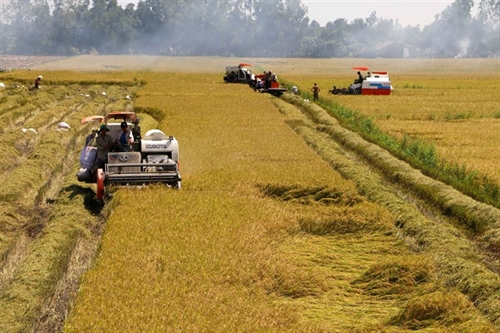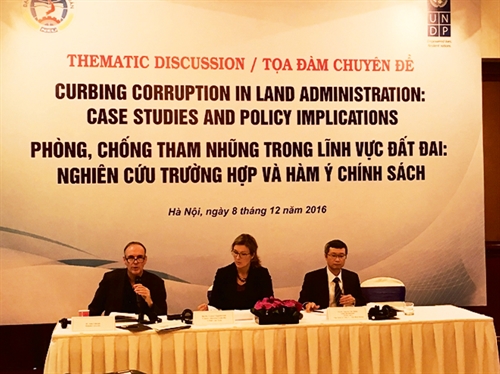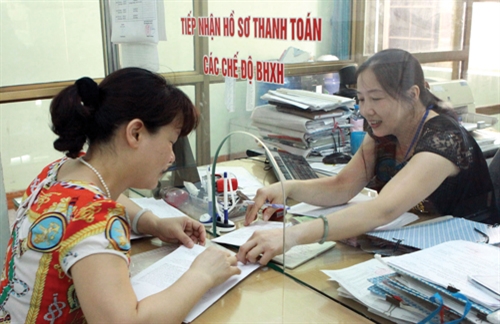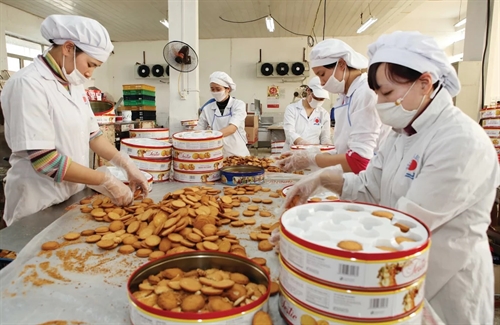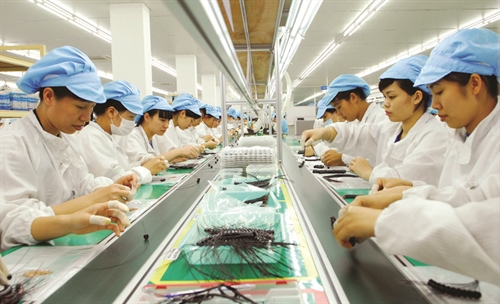According to the Police General Department, the number of child sexual abuse cases annually uncovered averages at over 1,000. But this figure is believed to be much higher in reality as many victims have chosen to keep silent because of fear, inferiority complex or shame. Experts agree legal obstacles are one of the reasons behind the problem.
The recent death of a thirteen-year-old girl in Ca Mau southernmost province has triggered public outrage against child sexual abuse which is reportedly rising across the nation.
On February 10, Mong K. from Ca Mau committed suicide by drinking handfuls of drugs and died in hospital one day later. Her last words to her mother were she had to die because she was a shame of her family. She also left a suicide note saying she could not die peacefully if her story of injustice would not be settled.
Earlier in last September, K. told her mother she was molested by a neighbor many times and wanted this man to be punished. In the same month, the mother filed a petition with Ca Mau police, reporting K was sexually assaulted eight times by a 57-year-old neighbor named B. and asking this man to be taken to court. The police later issued a decision not to institute the case because of lack of evidence other than the victim’s testimony. When learning that the man was not punished, K. chose death to claim justice for herself and her family and punishment for the perpetrator.
Only when the Prime Minister ordered the Ministry of Public Security and Ca Mau provincial authorities to take the case seriously that the provincial police issued another decision to institute a criminal case of child rape on March 28 but it was too late for K.
The tragic death of K. was a final straw sending public outcry at peak against delayed investigations in a host of child sexual assault cases recently reported only in a short period of time.
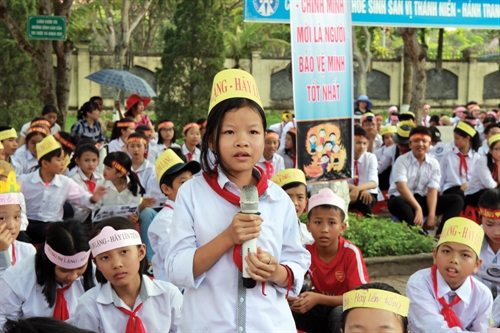 |
| Pupils of Nghi Huong junior secondary school, Cua Lo town, Nghe An province, learn about prevention of sexual abuse__Photo: Bich Hue/VNA |
In January, an eight-year-old girl in Hoang Mai district, Hanoi, was reported to have been abused many times by a 34-year-old neighbor named Cao Manh Hung. The family reported the case to the police of Thinh Liet ward which summoned Hung but released him later even though the child received a medical assessment of having torn hymen and genital injuries. Again, only after Deputy Prime Minister Truong Hoa Binh instructed Hanoi authorities to promptly verify the case that Hung was arrested for charges of obscenity against children in late March.
Another suspect in a child sexual abuse case, 77-year-old Vu Khac Thuy in Ba Ria-Vung Tau southern province, was accused of obscenity against children in March after President Tran Dai Quang asked to settle the case even though this man’s act was reported by the mother of his seven-year-old victim nearly one year ago.
The above are some typical cases reflecting an alarming rise in child sexual abuse across the country recently, which, however, appears to receive inadequate attention from concerned authorities. These cases were seriously taken only after interference from the highest level authority under public pressure.
Statistics from the Ministry of Public Security showed that from 2011 to 2015, 8,200 child abuse cases were detected with nearly 10,000 victims, of which sexual assaults made up around 65% with 5,300 cases. The number of child sexual abuse cases had doubled from 867 between 2010 and 2013 to 1,544 in 2014 alone, i.e., every day, three children fell victims of pedophilia.
A study conducted in 2009 at three high schools in Ha Giang and Quang Ninh northern provinces and Ho Chi Minh City by the Institute of Social Development Studies (ISDS), the Center for Studies and Applied Sciences in Gender, Family, Women and Adolescents (CSAGA) and ActionAid, found that 20 percent of interviewed students had been sexually abused in different forms, with some of them being molested as many as over 10 times a year. The age of victims mostly ranged from 14 to 16 but some aged at only between seven and nine. The number of boy victims was also not small, standing at nearly 21 percent.
According to a recent survey which summarized online news about woman and child sexual abuse from 2011 to 2016, over 21 percent of the victims in 332 sexual violence cases reported online were under 10 years old, with some at the age of only 2, and 60 percent at the age of between 11 and 25. The number of cases where victims were raped, robbed, assaulted and even murdered accounted for 32 percent and gang rape cases made up 13.5 percent. Some 73 percent of perpetrators were acquaintances, with 10 percent being fathers or stepfathers of victims.
Experts said there were many causes leading to rising child sexual abuse in the country as well as delays in investigation and prosecution activities, stressing, however, legal obstacles were an important reason.
Vietnam’s legal system which attached importance to material evidence rather than testimony was a reason behind the prolonged prosecution of child sexual abusers, Nguyen Phuong Linh, Director of the Center for Management of Sustainable Development, told a seminar on child abuse held recently amid a series of child sexual assault cases likely to be left on the shelf.
Criminal lawyer Le Van Luan told the Phap Luat Vietnam (Law of Vietnam) the current law leaves certain room in favor of perpetrators as physical traces are a must, i.e., only when a child is sexually assaulted with obvious physical damage on her body that the culprit can be charged. This was rather unreasonable as how an evidence could be found if the perpetrator only touched a victim’s genitals or the child’s family discovered the abuse too late, Luan pointed out, attributing this to the failure to bring to light a lot of cases involving obscenity against children.
ISDS Director Dr Khuat Thu Hong agreed acquiring evidence on the victim’s body as required by the current law was impossible in many cases, especially when the culprit used hands or mouth to abuse a child, blaming this for delays in bringing charges against the suspects, as in the case of Vu Khac Thuy in Ba Ria-Vung Tau.
National Institute of Forensic Medicine Director Nguyen Duc Nhu also pointed to legal obstacles in the process of forensic medical assessment, which also meant evidence could be lost.
Under the Law on Judicial Assessment, a person requesting judicial assessment has to send a written request to a procedural body which must give a reply to accept or refuse the assessment within seven days. Only after this body issues its reply that the requesting person can have the judicial assessment conducted on their own in case the procedural body refuses the assessment. This duration was too long for retaining important evidence of sexual abuse cases, such as sperm traces, pubic hair, signs of resistance, etc., Nhu said on the Phap Luat Vietnam.
Dr Hong also attributed rising child abuse cases to social prejudice and gender stereotype of inequality where victims were, ironically, the ones to blame, citing that many victims chose to keep silent for fear of being criticized to be silly and skittish and receiving contempt from the communities where they lived.
Deputy Minister of Labor Dao Hong Lan also pointed to poor education and public information about child protection, saying children had not been provided with necessary knowledge and skills to protect them from sexual abuse.
Inadequate legislation on child protection and care was another cause, experts said, citing the absence of regulations on responsibilities for reporting and processing information on child abuse as well as rules for separating children from their parents or caretakers in case the latter were the abusers.
Limited number, capacity and legal powers of personnel engaged in child protection and care at the grassroots level were another problem, the experts said.
To tackle child sexual abuse, the society should not keep silent any more and stop blaming on victims, Dr Hong said, adding the death of the poor little girl in Ca Mau delivered a strong message that silence before crime must terminate.
Nhu suggested there should be a mechanism allowing pre-legal proceeding medical assessment by victims, the results of which could be used as judicial assessment once their cases are heard.
Legal experts also said specialized authorities should be allowed to make arrangements to acquire evidence in child sexual abuse cases rather than to look for the real physical damage on victims’ bodies.- (VLLF)

